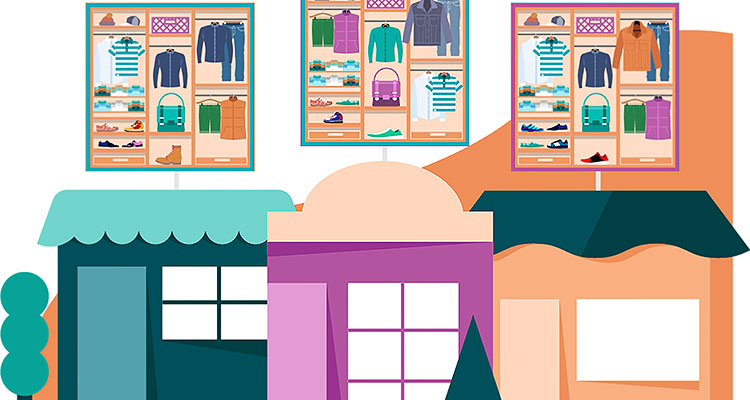
Sam Vise shares how AI can generate dynamic, location-specific plans that optimize product placement
What are the biggest challenges brick-and-mortar retailers face with traditional planograms?
Traditional planograms have long been a tool for brick-and-mortar retailers to help ensure consistency across stores. The problem, however, is that they take a one-size-fits-all approach, which doesn’t always work in today’s vast and distributed retail environment. Every store is different – with variables like location, shopper demographics, and inventory needs influencing each location – yet traditional planograms don’t account for these differences. That can lead to product placements that don’t resonate with local shoppers, ultimately affecting sales and the overall shopping experience.
Additionally, given their static nature, they make it difficult for retailers to quickly adjust to real-time inventory changes, shifting trends, or evolving shopper behaviors. This rigidity also makes it challenging for stores to achieve compliance as static planograms fail to account for inventory and capacity levels. As a result, store associates are tasked with making on-the-spot decisions about what to replace planned products with, leading to suboptimal and inconsistent placements.
Why do most stores still use traditional planograms?
Many retailers still use traditional planograms simply because it’s the way things have always been done. Planograms have been a standard tool for decades, and retailers have built processes and trained teams around them, so switching to something new can be a major challenge. In many cases, planograms are shared through Excel, PDFs, and static images, which lack the flexibility to support real-time, store-specific adjustments. While AI-driven planning tools are gaining traction, not every retailer has the resources to implement them just yet. Many still rely on manual merchandising or outdated systems that don’t support real-time, store-specific adjustments. Also, adopting new technology requires significant investment and training, which some retailers may be hesitant to take on.
Why is it critical for retailers to introduce dynamic planograms that adjust to each store’s unique inventory and layout?
Dynamic planograms ensure that product placements make sense for each individual store location. They give retailers the flexibility to adapt to real-time inventory, store layouts, and shopper behavior, which ultimately creates a better shopping experience. When the right products are in the right location at the right time, consumers can actually find them – ultimately boosting sales and leaving shoppers with a positive impression of that store. It may seem obvious, but simply having the correct products in stock is one of the hardest parts of managing a brick-and-mortar store.

Retailers may operate hundreds of locations, but each store has unique needs influenced by factors like size, location, and shopper demographics. To maximize sales, right size assortment and allocation, and minimize product waste, it’s critical that retailers customize their planning to each store’s specific requirements. For instance, merchandising and inventory management vary significantly between department stores and small-format locations, even under the same brand – so the requirements to properly stock and manage each store are going to be very different. This distinction will be particularly important as more retailers experiment with different store formats and sizes, making dynamic merchandising planning key to ensuring success across all locations.
Dynamic planograms also improve employee experience by making it easier for visual merchandising teams to design effective plans and visual guidelines and channel more creativity into their day-to-day work rather than being bogged down by menial tasks caused by inefficient and static planograms. They also help store teams seamlessly execute HQ’s merchandising strategies by providing approved alternatives when certain products are unavailable, ensuring merchandising is always optimized for profitability and sales performance.
How does AI help retailers optimize visual merchandising in ways static planograms can’t at individual store level?
AI takes visual merchandising to the next level by making planograms smarter, more adaptive, and store specific. Unlike static planograms that follow a fixed template, AI-driven planograms can be created rapidly and at scale, allowing retailers to adjust in real-time based on inventory and capacity levels, store layouts, and local shopper preferences. By continuously analyzing data, AI can generate dynamic, location-specific plans that optimize product placement.
For example, if a product is selling faster in one store location than another, AI can automatically update the planogram to prioritize high-demand items and keep shelves optimized for sales. If a store runs out of stock on one flavor of a drink, AI can evaluate that specific store’s inventory and identify the next best option to fill that space on shelves. It also helps retailers make the most of their space by tailoring product placements to fit each store’s unique layout.
AI-powered algorithms provide retailers with an accurate, real-time view of their inventory, ensuring alignment with merchandising strategies and keeping employees in the loop on their store’s inventory levels. In today’s retail environment, where shrink and misplaced items are common challenges, having a precise inventory picture is a non-negotiable to keep up with the uncertainties that come with physical retail.
With retailers facing challenges like store closures, bankruptcies, and evolving regulations reshaping the retail landscape, how can dynamic planograms help them stay competitive?
With retailers navigating store closures, bankruptcies, and evolving regulations, the ability to optimize each location in real-time is critical. For retailers dealing with tighter budgets and fewer resources, AI-driven planograms ensure that every square foot of space is being used effectively, maximizing sales and customer experience while reducing waste.
By using real-time data, retailers can ensure any given store’s product placement and assortment are driven by demand, not guesswork. Understanding the effectiveness of allocation and assortment strategies helps retailers better prepare for and make decisions about bankruptcies, store closures, and pricing changes. Additionally, as regulations, tariffs, and supply chain disruptions reshape physical retail, having a flexible approach to merchandising allows retailers to quickly adapt. Customizing store layouts and assortments for specific locations also helps stores stay relevant in diverse markets, ensuring a better customer experience and more efficient operations.
How do you see AI evolving in the next few years to further enhance retail merchandising and in-store experiences?
I think AI will become even more intelligent and autonomous, enabling retailers to anticipate demand, personalize product placements, and optimize store layouts with greater precision. It will also play a major role in merchandising creativity, allowing retailers to test and visualize different planogram layouts, promotional displays, and product placements without the expense of trial and error. Also, AI will improve customer engagement through personalized recommendations and interactive displays, creating an engaging shopping experience.
Sam Vise is the co-founder and CEO of Optimum Retailing, an in-store experience management platform that multi-unit retailers use to gain the actionable insights needed for better per-store performance.